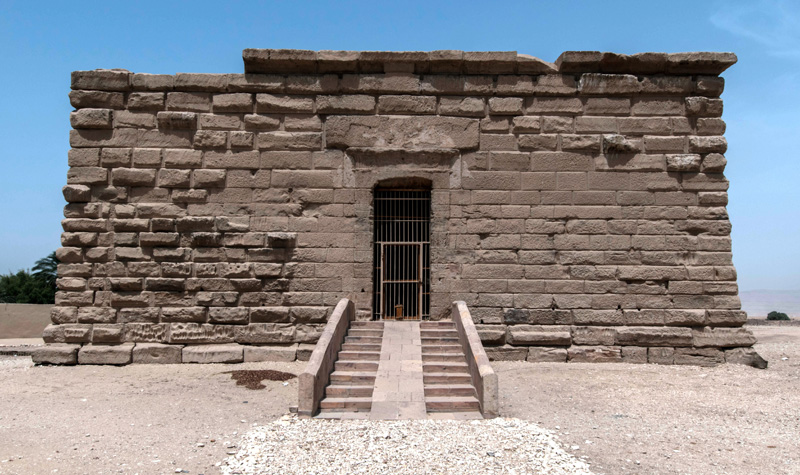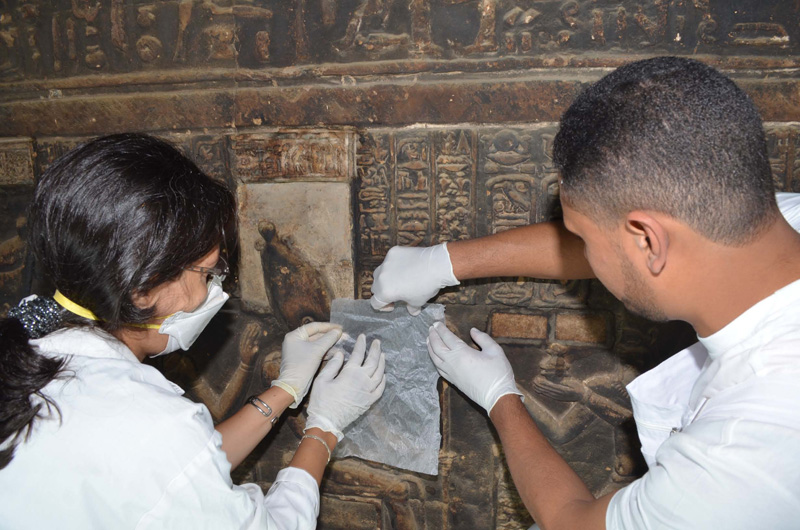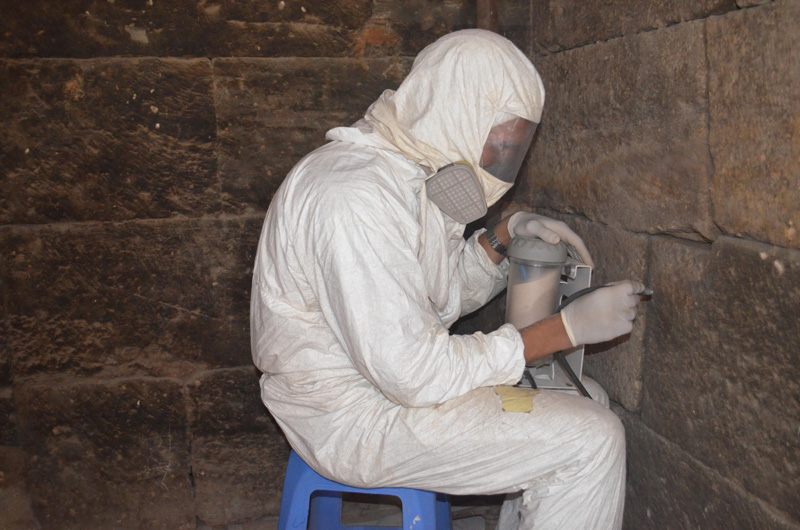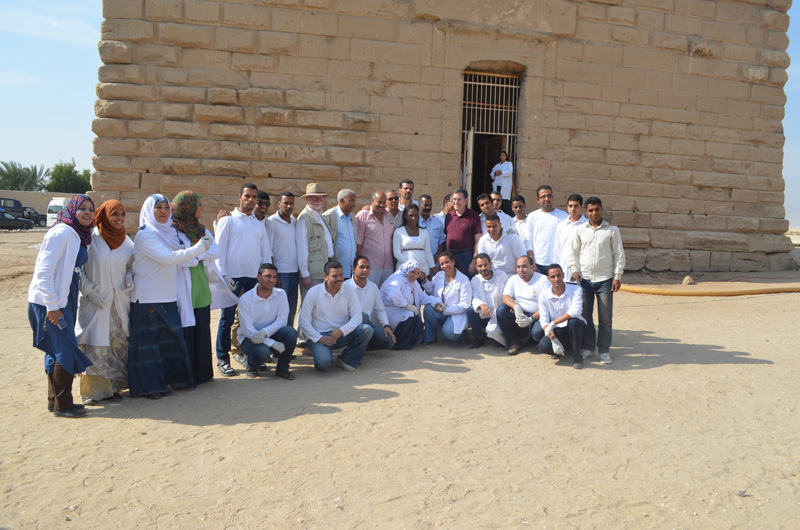- EraRoman
- Project DirectorJohn Shearman
- LocationThebes
- AffiliationAmerican Research Center in Egypt (ARCE)
- Project SponsorUSAID
- Project Dates2011-2015
- Project ImplementerARCE
At the border – where lush farmland meets arid desert on Luxor’s West Bank – is the early Roman Isis Temple at Deir el Shelwit. Constructed in the first century CE, the temple is a fascinating fusion of cultures: a Roman temple dedicated to the cult of the ancient Egyptian goddess Isis, who was worshipped for her ability to heal. Unassuming and unfinished, the small square temple contains four chapels, a central chamber, an antechamber and a short staircase leading to a rooftop terrace. The interior and façade of the central chamber are decorated in colorful, carved wall reliefs that depict Roman emperors making offerings to ancient Egyptian gods and goddesses, as well as cartouches containing the names of a number of Roman emperors. The reliefs are raised rather than carved into the stone walls, creating a visually stunning textured effect.
Prior to restoration, the decorative elements of the temple were obscured by centuries of dirt build-up and smoke residue. Soot deposit is a common feature of many temples across Egypt, visual evidence of their reuse and inhabitation over time. Despite its location less than three miles (five kilometers) from the Valley of the Kings, Isis Temple has seen few tourists or members of the conservation and archaeology communities. As a result, there were never any appreciable conservation or restoration treatments, nor an effort to provide visitor facilities. In 2011, the American Research Center in Egypt, with funding through the U. S. Agency for International Development, undertook a project to clean and conserve the site, as well as update it with new visitor and management infrastructures.
The initial phases of work on Isis Temple prepared the site for conservation and construction. The project cleaned the surrounding landscape of weed overgrowths, humanely removed the bats that had taken up residence in the temple, removed obstructive power poles and a guard shack, leveled out the ground and documented the temple’s condition and reliefs through photography and epigraphy. In 2012, trainees from ARCE’s conservation field school for the Egyptian Ministry of Antiquities began work on the site. Concurrent with work on the temple, conservators were provided a rigorous schedule of trainings and lectures on pertinent topics like conservation ethics, effective workflows and archaeological documentation.
The team closed cracks and holes in the temple’s façade and roof, chemically cleaned the interior reliefs, micro-sandblasted the temple’s uninscribed internal corridor walls to remove smoke residue, capped the site’s original surrounding mudbrick wall with new mudbrick and added new flooring and guard rails inside the temple. The work by the field school continued for three seasons and primary conservation work ended in 2013. In June of that year, 53 field school participants graduated in a ceremony celebrating their remarkable work on the Isis Temple. An additional 45 conservators participated in an advanced field school from 2013-14 and carried out a final round of cleaning and photographic documentation.
In tandem with the conservation work, the site underwent a number of operational and structural improvements that relied on sustainable resources and functions. The team used sandstone from a nearby project to construct the façade of a newly built on-site security office and visitor restroom and an outdoor seating area. Limestone chips from a project in nearby Qurna make up the walking paths and visitor parking lot. Additionally, mudbrick debris from Qurna was reused to repair and finish the site’s mudbrick wall. To ensure energy efficiency, solar panels back up the power required for the internal lighting and solar-powered security lighting was placed in selected areas. Motion sensors inside the temple also guarantee that the lights shut off after visitors exit the building and make the overall site low-maintenance and low-waste.
The opening of Deir el Shelwit in January 2014 coincided with the United Nations World Tourism Organization conference in Luxor and was attended by officials of five Egyptian ministries, as well as members of the diplomatic community. The conservation and overall improvements carried out at Isis Temple are a landmark effort in the practice of sustainable cultural heritage management in Egypt, and the final result continues to be enjoyed by local and international visitors alike.




